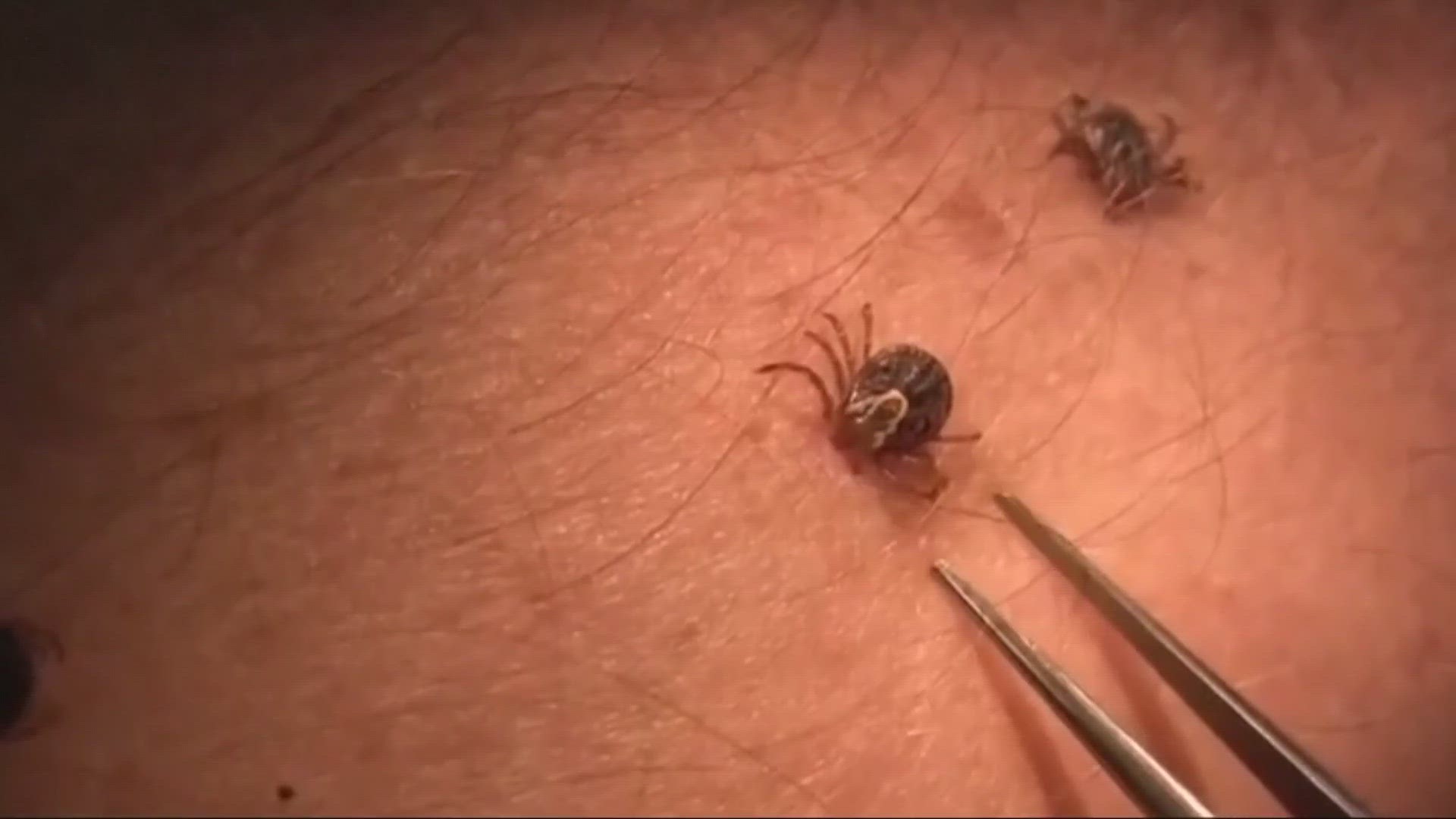CLEVELAND — The weather is finally fit for some weekend exploring for you and your dog. And though we don't want to rain on your pooch parade, we do want you to be prepared because tick season is here.
For the record, ticks are always present, but they are most active in the state generally between the months of April through September.
The Ohio State University Extension reports ticks and incidences of tickborne disease are on the rise and unlikely to wane anytime soon. Educator Tim McDermott says there are a number of factors contributing to the increase, including climate change and increasing number of wildlife living in close proximity to people.
“Ticks are extraordinarily adaptable and can travel on host animals,” he said. “Ticks expand when their habitat range expands due to global climate change. They take advantage of what they can take advantage of to move to new spaces. So now, every year going forward has the potential to be bad, and you should go into each tick season thinking about how you can keep you and your family tick-safe.”
Now is a good time to apply that first dose of flea and tick control on your pet.
There are edible tablets, given once a month, and prescribed by your vet.
There's also a topical version, that can be purchased over the counter and applied once a month.
"Lyme disease is very, very, very common among in dogs," said Dr. Katie Farmer, a veterinarian with the American Humane Society. "When I was in private practice I saw it all the time, and dogs can get very sick from it. The other thing is they can bring those ticks into your house -- and then those ticks can bite you too."
Twenty years ago in Ohio, the American dog tick was the only tick of medical concern to humans, livestock and pets. Now there are five in the Buckeye State. These include the American dog tick, the blacklegged or deer tick, the Lone Star tick and since 2020 the Asian longhorned tick and the Gulf Coast tick.
With the rising tick population comes the risk of contracting tickborne illnesses such as anaplasmosis, babesiosis, Rocky Mountain spotted fever and Lyme disease. And in some cases, Lone Star ticks can cause an allergy to red meat after the person is bitten by the tick.
Prevention is the best medicine. Be aware of your surroundings. Always check for ticks on humans and pets when in the woods or tall grasses. Stick to the walking path on trails. Tuck your pants into socks. This helps prevents ticks from crawling up under your clothing in search of skin. Light-colored clothing makes it easier to spot ticks. There is clothing you can purchase with permethrin, an insecticide that repels ticks and other insects like mosquitos. Or you can treat the clothing, with the spray yourself.
The Ohio Department of Natural Resources has more information on ticks and tick prevention HERE.
Editor's note: Video in the player above was originally published in a previous story on March 1, 2023.

